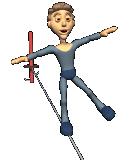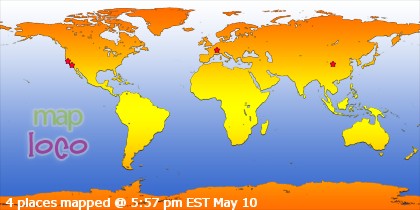
By Tom Takao
Clyde Beatty Jr. is known for his surfing, shaping and his glassing, in fact Clyde is considered to one o f the first to use epoxy resins on surfboards. When some were experimenting with epoxy, Clyde went to Europe to get light stabilize epoxy made. Clyde has airbrushed, laminated, fin and hot coated, sanded, pin lined, glossed and polished. When it came to glassing Clyde Beatty was on the creative edge.
Clyde first learned how to surf in 1964 at California Street in Ventura. He was in the fifth grade at the time. Clyde’s father operated a circus, which was called Clyde Beatty Cole Brothers Circus. Clyde senior was a well known lion and tiger trainer. Clyde mentions that his father was voted the top lion and tiger trainer of all time. Hence, Clyde Jr.’s logo is that of a Tiger.
His first surfboard was a Duke Kahanamoku pop-out made in Ventura, his parents bought it for him. His grandfather made him a ric shaw for his bike, so he could take his board to the beach. The board was big to handle, he couldn’t put his arm around it, so Clyde carried it on his head. Clyde was the surfer in his group of friends.
While going to University High School in Pacific Palisades during the latter part of the 60’s Clyde was a team rider for the Hobie / Blue Cheer surf shop in Santa Monica. There were other surf shops in Santa Monica including Natural Progression and Jeff Ho Surfboards. Mike Perry was the shaper at Blue Cheer and had an influence in Clyde’s shaping. Clyde learned by watching Mike shape a lot of boards including the ones he rode for Blue Cheer. Clyde recalls this one time when his friend Steve Braum a shaper and himself were working on a board.
They were going surfing the next day and Clyde was going ride the board no matter what. So Steve skinned an old Con ugly and reshaped it. Clyde laminated the bottom and top of the blank with a little help from Steve. After the laminatiom Clyde glassed on the fin and called it a night. The next morning, Steve and Clyde were ready to go. The board didn’t have a sanding coat and was tacky. No matter, the surf was good. They took it to Salt Creek, and Clyde waxed it up and went out. It didn’t take long before the board started to fall apart. After the experience Clyde would learn the finer points in glassing.
The Blue Cheer factory is where Clyde learned to shape and glass. Being around Mike Perry, and watching glassers like Wayne Miyata gloss and pin line and Bob Petty laminating. Bob was the man who could power when it came to laminating. Clyde’s first board that he shaped was also air brushed by him, using a spray enamel can. Recently someone in San Diego returned it to Clyde. A little beat up and brown, but it’s the 001 board that started it all for Clyde,
While learning the ropes in board manufacturing, Clyde was a 4A surfer the equivalent of an ASP pro. During the 70’s there was no money in surfing contest. You had to get a real job or make surfboards. Clyde was an Art Major at Cal State Northridge. Going to his classes and doing his homework, Clyde found time to start his first surf shop in Santa Monica. This gave him the experience when he opened his next shop in the Huntington Beach / Westminster area.
Having waited up to this point to ask Clyde about the Rocket Fish. A modified fish that Clyde rode in the mid 70's. He mentions an article appeared in 1974 about the Rocket Fish which were called gun fishes before the article. Steve Lis a kneeboard shaper in San Diego was making twin fin swallowed tail boards called Fishes in the late 60's. From the Fish came a hybrid design in the mid 70's, longer with a pointier nose and a more drawn in tail. Steve’s fishes were more rounder on the nose and wider in the tail. Clyde had tried the fish and felt it had limitations. "You could pump them, and they were fun". But Clyde couldn’t get the long drawn out turns out of them.
Talking fish stories; Clyde remembered the 1975 U.S Surf Contest at Hatteras. He and some friend were driving there from California in Clyde’s car. Somewhere in between California and Arizona the car rolled over and the fin on Clyde’s favorite board broke off (a single fin surfboard). They flew to Albuquerque and got a rental car and drove to the contest. During this trip Clyde was taking some boards to the East Coast for some of his surfboard dealers. One of those boards was a fish. Since his contest board was decommissioned, Clyde rode the fish in the contest.
This was a National Surf contest and it was big. Clyde took 5th place, Greg Loehr came in 4th , 3rd went to Tony Staples, Jim Cartland took second, and Rich Rasmussen took the top spot. After the contest Clyde was having fun with the fish, surfing Hatteras’s waves. When the East Coast Rep for O’neill, Mike Grasley was riding a pull in nose fish that was a little bit longer. In Clyde’s view he was surfing light years ahead, compared to everyone else. And if Mike was in the contest, the standing might have changed said Clyde.
After getting back, Clyde figured Joey Thomas had shaped Mike Grasley pointed nose fish. Clyde had surfed with Joey in a 4A contest awhile back in Santa Cruz and hadn’t forgotten Joey's shaping and surfing abilities. So Clyde and Steve Braum shaped a few modified fishes. They kept refining each board more and more. Clyde’s main focus was surfing, since he was on the contest circuit. As mentioned earlier the gun shape fish became known as the Rocket fish. A design credited to Joey Thomas.
Having glassed some of Brewer’s surfboards, Clyde incorporated the down rail concept into his Rocket Fish designs. It proved to be a match and Clyde’s surfing went up another notch. Clyde has continued making surfboards in the 80's, 90's, and 00's. Now days Clyde calls the rocket fish by a new name: Tiger Fish, since they have been refined with newer materials and the contours flowing into a new outline, with the removable fins and a tri planning hull.
Clyde got his picture taken riding one of his Tiger Fish and made the cover of Wet Sand Magazine (see photo on the left). Clyde also won the Rincon Surf Contest riding one. Taking first in Grand Masters, 3rd in the Masters, the board worked well.
Out of necessity to have surfboards for the contest circuit, Clyde learned to make surfboards. His surfing has stayed at a high level through the years and his boards are the reason.
Monday, July 20, 2009
CLYDE BEATTY Jr. FROM THE ROCKET TO THE TIGER FISH
Labels: .circus.
Subscribe to:
Post Comments (Atom)














0 comments:
Post a Comment